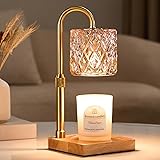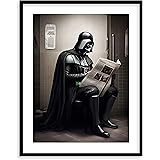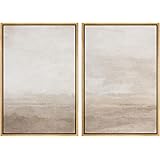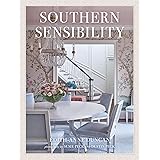Transforming Your Space: A Comprehensive Guide to Your DIY Small Kitchen Makeover on a Budget
The prospect of a kitchen renovation can often seem daunting, yet a significant transformation can be achieved through diligent DIY efforts. As meticulously documented in the video above, a remarkable journey of a **DIY small kitchen makeover** was undertaken, culminating in a refreshed and functional space. This ambitious project, initiated after approximately two years of planning since the home’s acquisition, underscores the profound impact attainable even within budget constraints. Such endeavors not only enhance aesthetic appeal but also significantly improve daily functionality, demonstrating that substantial upgrades are within reach for many homeowners.Indeed, the transformation of an outdated kitchen into a contemporary haven often commences with foundational preparations. The initial stages of any successful renovation typically involve extensive cleaning and decluttering. In this particular instance, the systematic removal of all cabinet contents was prioritized, serving dual purposes: thorough cleaning and comprehensive reorganization. This preliminary step is crucial, as it allows for an unobstructed work area and facilitates a detailed assessment of the existing infrastructure.
Furthermore, the removal of all cabinet doors and drawer fronts constitutes an essential element of the preparation phase for painting. This meticulous process ensures that all surfaces are accessible for cleaning, sanding, and priming, thereby promoting a uniform and professional finish. The methodical approach taken, including the labeling of each door and drawer, is highly recommended for kitchens of any size, as it significantly streamlines the reinstallation process and prevents potential confusion.
Conquering Challenges: The Cabinet Preparation Process
As is frequently encountered in home improvement projects, unforeseen obstacles invariably arise. In this **DIY small kitchen makeover**, a notable challenge involved the removal of aged babyproofing mechanisms left by previous occupants. These magnetic latches and adhesives, after prolonged adherence, necessitated persistent scraping and specialized cleaning agents for effective dislodgment. Such experiences underscore the importance of flexibility and resourcefulness when tackling renovation tasks.
Subsequent to the removal of stubborn residues, the cabinets underwent a crucial degreasing and deglossing treatment. While traditional sanding methods are often employed to prepare surfaces for paint adhesion, an innovative product—liquid sandpaper—was utilized in this project. This chemical solution, costing approximately $5, was applied to chemically etch the cabinet surfaces, effectively removing existing gloss and creating a receptive texture for primer application. Its efficacy in saving considerable time and effort was particularly noted, suggesting a viable alternative to laborious manual sanding.
Prior to the liquid sandpaper application, a preliminary wash with soap and water was performed to eliminate superficial grime, dog hair, and general dirt. This two-step cleaning protocol ensures that no contaminants interfere with the chemical deglossing process or the subsequent paint layers. The meticulous nature of this cleaning phase cannot be overstated; it forms the bedrock upon which the entire painting project rests, influencing both the appearance and longevity of the final finish. Any remaining imperfections, such as small holes from removed hardware, were diligently filled with wood filler and subsequently sanded smooth, thereby ensuring a pristine canvas for painting.
The Art of Cabinet Painting: Primer and Finish Coats
With the cabinet surfaces meticulously prepared, the application of primer represents the next critical juncture in the **budget kitchen makeover**. For this project, Kilz Original Low Odor Interior Primer was selected, priced at approximately $22.99. The choice of a high-quality primer is paramount, as it serves to block stains, provide superior adhesion for the topcoat, and ensure color uniformity, particularly when transitioning from dark to light cabinet colors. This primer was noted for its low odor, a significant advantage for indoor projects.
The method of paint application profoundly impacts the final aesthetic. In this instance, a HomeRight Finish Max Super paint sprayer was employed, offering the promise of a smooth, professional-grade finish. While paint sprayers can expedite the process and minimize brushstrokes, careful consideration of paint viscosity is essential. Although the specific paints used were formulated not to require thinning for sprayer application, it is generally advised that product instructions on paint cans be meticulously reviewed, as thinning requirements can vary significantly by brand and type. The systematic setup, including the use of temporary stands for drying, contributed to an organized workflow.
The painting process itself involved two distinct stages: the primer coat followed by two coats of the chosen finish paint. The primer was applied first, allowing sufficient drying time before the initial topcoat. For the finish, Pro Classic Interior Acrylic Latex smooth enamel finish in a satin sheen was chosen, a durable option suitable for high-traffic areas like kitchens. This dual-coat approach ensures maximum coverage, depth of color, and enhanced resistance to daily wear and tear. The coordination of tasks, with one individual managing the paint sprayer and another the cord, exemplified an efficient collaborative effort, even for tasks that could theoretically be handled by a single person.
Reimagining the Foundation: Floor Painting and Sealing
Beyond the cabinets, the kitchen floor presented another significant opportunity for transformation within this **DIY small kitchen makeover**. The existing floor, which had been a source of discontent, was revitalized through the application of Valspar porch and floor paint in a light gray hue. Porch and floor paints are specifically formulated for high durability and resistance to abrasion, making them ideal for the rigorous demands of a kitchen environment. While this particular color dried slightly darker than anticipated, it nonetheless represented a vast improvement over the previous condition.
The application of floor paint requires careful attention to preparation, much like cabinet painting. The floor was thoroughly cleaned and allowed to dry completely prior to painting, ensuring optimal adhesion. Following the application of the paint, a crucial sealing step was undertaken using polyacrylic. This protective topcoat serves to enhance the paint’s durability, provide a smooth finish, and make the surface more resistant to spills and foot traffic. The polyacrylic also restored a degree of slipperiness, giving the floor a more traditional kitchen feel, in contrast to the slightly tacky texture it exhibited prior to sealing. The long-term performance of painted floors is contingent upon proper application and sealing, offering a cost-effective alternative to complete floor replacement.
It must be acknowledged that lighter floor colors, while brightening the space, can also make dirt, crumbs, and pet hair more conspicuous. This is a practical consideration for homeowners, necessitating more frequent light cleaning. Despite this, the aesthetic benefits of a lighter, refreshed floor significantly outweighed this minor maintenance adjustment. The transformation of the floor, alongside the updated cabinets, contributes immensely to the overall lightness and modern appeal of the newly renovated kitchen.
Expanding Functionality: Shelving, Bar Area, and Walls
A comprehensive **budget kitchen makeover** frequently extends beyond just cabinets and floors to include other structural and decorative elements. The installation of floating shelves emerged as a key feature, designed to introduce an open, airy feel while providing additional storage and display space. These shelves require robust anchoring into wall studs to ensure stability and safety, particularly when bearing significant weight. The selection of wood for these shelves involved an attempt to lighten a yellowed finish, a common challenge with older wooden pieces, though a specialized stain was found to yield minimal whitening effect.
An innovative counter/bar area was also incorporated, crafted from an IKEA piece acquired through a Facebook Marketplace transaction. This creative repurposing exemplifies how existing furniture can be adapted to serve new functions, offering an economical solution for adding seating and surface area. The piece was strategically modified to accommodate bar stools underneath, transforming an underutilized wall into a functional and inviting spot for casual dining or gathering. Such adaptive reuse not only saves money but also contributes to a unique, personalized aesthetic.
To further enhance the visual texture and character of the kitchen, peel and stick wallpaper was applied to a designated wall section. This type of wallpaper is celebrated for its ease of installation, often achievable by a single individual within a relatively short timeframe—approximately one hour in this instance. Peel and stick options provide an affordable and temporary way to introduce patterns, colors, or textures without the commitment or complexity of traditional wallpapering. This approach allowed for a significant aesthetic upgrade with minimal investment and effort, despite a minor setback involving a defective roll that necessitated a replacement.
Reflecting on Progress and Anticipating Future Enhancements
The initial reveal of this **DIY small kitchen makeover** showcased a dramatic shift from its former, dated appearance. The newly painted cabinets, adorned with modern pulls acquired affordably from Amazon (approximately $20 for a pack of 20), immediately brightened the room and imparted a contemporary sensibility. This singular change, whether executed with a sprayer or rollers, is consistently noted as one of the most impactful modifications a homeowner can undertake in a kitchen, often serving as a catalyst for further renovation confidence. The tactile experience of the polyacrylic-sealed floor further solidified the feeling of a fully functional and revitalized space.
Looking ahead, the project is poised for further evolution, with several key components slated for completion in “Part Two.” These include the finalization of the wallpaper installation, the creation of a dedicated coffee station, and the meticulous finishing of trim and hole patching. Furthermore, plans encompass the installation of a wall sconce above the sink, which will necessitate electrical adjustments for wiring. The floating shelves and the custom bar tabletop will also undergo final sanding and sealing before being securely mounted. Crucially, the kitchen is set to receive new countertops and a new sink, representing significant structural and functional upgrades that will culminate the comprehensive renovation. This phased approach allows for budget management and incremental progress, making ambitious **budget kitchen makeover** projects more manageable for the average homeowner.











